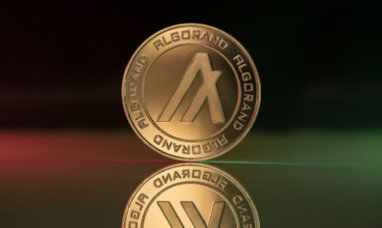This year, the Global Crypto Adoption Index has reported an 880% spike in crypto adoption worldwide. Data from the report equally suggests that this uptick, especially in emerging markets, is largely fueled by transactions occurring on Peer-2-Peer (P2P) platforms.
One doesn’t have to be a crypto expert to suspect that a spike in global crypto adoption will translate into a spike in the number of new crypto investors as well. Crypto has a lot of information that is important to understand, and cryptocurrency transaction fees are one such thing.
In this article, we’ll explore the history, relevance, and peculiarities of transaction fees in the crypto space, specifically for the benefit of those new to the crypto space and crypto enthusiasts.
Bitcoin and the Idea of Paying Transaction Fees
Satoshi Nakamoto kick-started a cryptocurrency revolution in 2008 when he published a whitepaper discussing an electronic cash system called Bitcoin.
By 2013, Nakamoto’s invention had gathered steam and was on its way into the financial mainstream. The considerable jump in the number of Bitcoin adopters by the year 2013, compared to previous years, proved its worth, and since then has grown exponentially.
To understand the evolution of transaction fees in the crypto space, our examination must start with Bitcoin.
At the core of the Bitcoin network lies blockchain technology, a technology that generally allows any individual to successfully send bitcoins or any other cryptocurrency to another individual.
The blockchain is a decentralized public ledger containing the history of all bitcoin transactions ever made and processed.
To guarantee the integrity of transactions processed on the Bitcoin blockchain, Satoshi Nakamoto developed timestamps using the hash-based proof of work teachings of Adam Back.
Crucial to Nakamoto’s timestamp system is the timestamp server, a server that takes the hash of a block containing transactions, timestamps it, and publishes it on the Bitcoin network.
Because this server confirms the timestamp of every transaction that occurs in real-time, Nakamoto was able to build a system that facilitates transactions in a decentralized way.
In any case, if the blockchain fails then the Bitcoin network automatically fails.
Armed with this understanding, hackers have attempted to overwhelm the blockchain technology powering the Bitcoin network by making a boatload of malicious transfer requests. To survive these attacks, the decision to start charging transaction fees for transfers was reached by Bitcoin developers.
The malicious attacks were expected to reduce because of the introduction of fees for all bitcoin transactions. Fortunately, it worked.
But that’s not all. A decision whose sole focus was the protection of the Bitcoin network from attack also turned out to be a great incentive for miners and validators, who are crucial to every successful crypto transfer.
The task of validating transactions by inserting data into the blockchain, also known as blockchain anchoring, is one of the main tasks miners carry out for a price. A miner is entitled not only to the transaction fee that comes with a transaction but also to a bounty called the block reward.
A block reward represents the amount a miner gets for adding a collection of transactions not exceeding one MB in size to the Bitcoin blockchain.
Some beginners to cryptocurrency ask if it’s possible to cancel a Bitcoin transaction. The answer to this question underscores another definitive attribute of the blockchain.
For transactions on the Bitcoin network, it’s impossible to reverse or cancel confirmed transactions as the blockchain is a decentralized, peer-2-peer exchange system that has no use for third parties or intermediaries in any transaction.
It also precludes the initiators of a transaction from arbitrarily reversing a confirmed transaction.
Transaction Fees in the Crypto Space
Different transaction fees apply for different cryptocurrencies, but generally speaking, transaction fees work on the principle of supply and demand.
For the Bitcoin network, miners prioritize transactions with higher fees when the memory pool–a repository of all pending Bitcoin transactions–is full. For this reason, an individual looking to speedily send bitcoin may have to pay a higher transaction fee.
However, for the Bitcoin network, transaction fees are not determined by the amount being sent but by the prevailing network conditions at dispatch and by the data size of a transaction.
For Ethereum, transaction fees, also known as gas fees, are not only informed by supply and demand but by the peculiarities of its ecosystem.
Since Ethereum isn’t a cryptocurrency but a blockchain, with many uses like smart contracts and dApps, its transaction fees are influenced by multiple factors.
Stable coins like Tether are not known to extract transaction fees, especially when funds are moved between USDT accounts.
For the most part, transaction fees for crypto transfers tend to react to market fluctuations. However, as Anatol Hooper, writing for Cointelegraph, pointed out, the size of the transaction being made and the peculiarities of each blockchain constitute the two main factors affecting fees for crypto transactions.
The Ethereum blockchain has attracted lots of criticism over the years, in part because of what is deemed its outrageous gas fees. Cryptocurrencies such as Ripple, Cardano, Litecoin are known to charge low transaction fees.
How to Deal With High Transaction Fees
Now that you have a basic understanding of transaction fees and how they came to be, you may be wondering if there’s a way you can protect yourself from paying unnecessarily high or low fees whenever you need to make a crypto transaction.
The truth is you’ll need some help with determining the best transaction fees to pay. Fortunately, most of the crypto wallets out there automatically calculate the required fee/best fee you’ll need to pay for a successful transaction.
Crypto wallets tend to have access to a large body of data and tools, so it may be beneficial to you to follow their recommendations on transaction fees.
If you feel that the required transaction fee suggested by a wallet is too high, you can choose to set your own transaction fee, provided the wallet allows you to set a custom transaction fee.
If the wallet does not allow you to set your own price, you can choose to wait out the exorbitant fee.
This is because large transaction fees usually stem from a congested blockchain, and chances are; the blockchain network won’t be congested forever.
But if you’re in a hurry to complete the said transaction, consider transacting with a wallet that allows you to set your own terms. However, the freedom to choose these fees should not be as a license to set unrealistically costs. If you set an unrealistic transaction fee, you risk a failed or delayed transaction.
Final Thoughts
Cryptocurrencies need blockchain technology to preserve their integrity, and as such, the miners who validate transactions earn incentives for successful crypto transactions.
As a crypto trader, investor, or enthusiast, make yourself familiar with tools like bitinfocharts (for Bitcoin) and mempool.space in order to get well-researched tips on recommended transaction fees in real-time.
With the aid of these tools, rest assured that any decision you make to transact in crypto is informed by empirical data.
Featured Image: Megapixl








